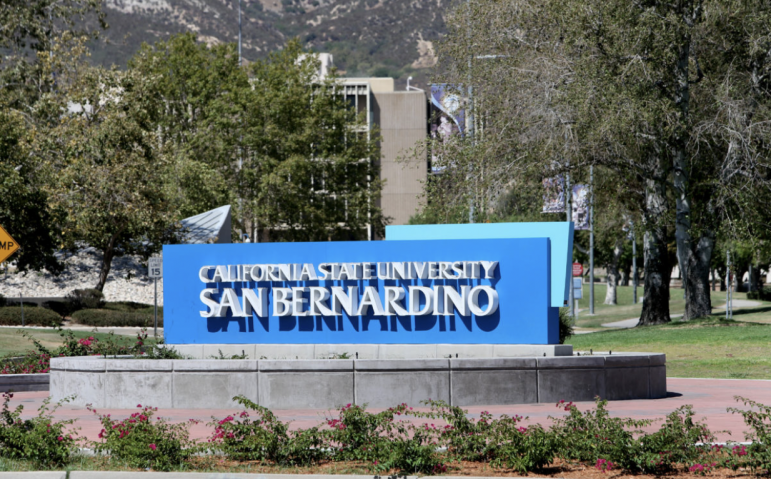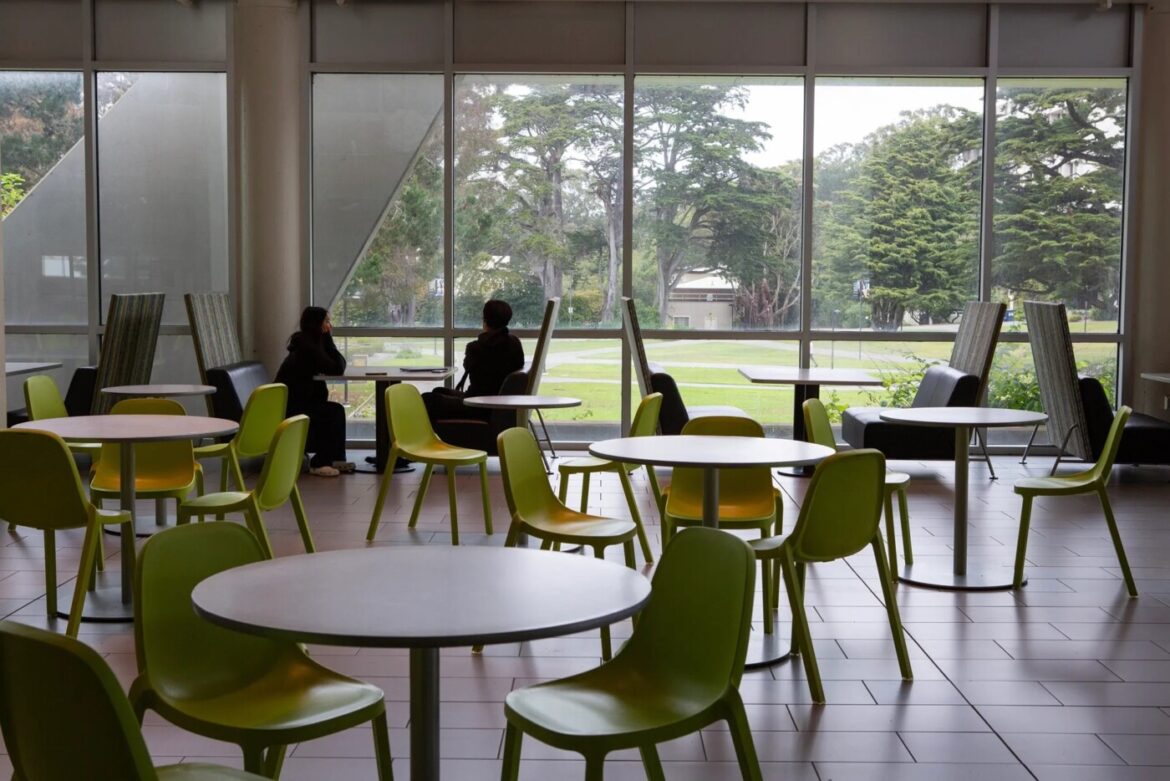How many employees at the California State University system were accused of some kind of unwanted sexual conduct in recent years?
Surprisingly, it’s a question no one can answer with confidence even as Cal State, the nation’s largest four-year public university, grapples with the fallout from numerous high-profile cases of sexual harassment and abuse.
A key takeaway from two hard-hitting sets of reports released late last month is that the 23-campus system collects insufficient data.
In one of the reports, the California State Auditor wrote that Cal State lacks “meaningful analysis” to “identify and respond to concerning trends.” The auditor’s report, which was requested by state lawmakers, found that the data on the number of unwanted sexual conduct reports — such as sexual harassment, misconduct, stalking, assault and violence — filed against employees is “unreliable.”
Cozen O’Connor, a law firm the Cal State Chancellor’s Office hired last year to publish more than two dozen reports, wrote that “the current process for collecting data does not result in consistent, reliable data across the system.”
The two sets of reports revealed a huge discrepancy in how many Cal State employees at the 23 campuses were accused of some kind of improper sexual conduct — 1,246 across five years according to the audit and 452 in four academic years according to Cozen.
The reasons for the discrepancy range from imprecise data collection to the addition of new categories of unwanted sexual conduct in the most recent year. Both sets of reports also state campuses don’t use the same software to track improper sexual conduct and don’t log cases the same way.
Buying better software and training more staff to track these reports of unwanted conduct are some of the reasons Cal State estimates it’ll spend $25 million in 2024-25 and unknown sums going forward to adopt all the reports’ recommendations.
“We agree with and will implement the recommendations provided in the audit report, as well as those identified in the Cozen assessment,” wrote Jolene Koester, Cal State’s interim chancellor, to the state auditor.
Collecting good data is a common watchword of victims’ advocates. Both sets of reports make clear why students and staff will be safer if campuses have a more accurate count of sexual harassment, misconduct, violence, stalking, and assault cases.
Complaints against employees can lead to investigations, which may result in additional training, a reprimand or disciplinary action all the way to dismissal for those found to have violated Cal State policy.
But the campuses lack “a sufficient understanding of the volume” of sexual and gender-based harassment and violence, the Cozen systemwide report said. Nor can campuses spot trends in specific locations or academic programs, or even whether a single individual is the source of multiple complaints, the Cozen and audit reports noted. Cozen added that “because the CSU is not tracking data across campuses, an employee who engages in conduct of concern at one CSU university can often seek employment at another CSU without the new university being aware of the misconduct.”
In multiple cases, the auditor’s report flagged issues with campuses that determined employees didn’t violate Cal State policy on unwanted sexual conduct. The auditor’s office wrote that it found “deficiencies that caused us to question the investigative determination about sexual harassment.”

Across U.S. higher education, sexual harassment and assault are rampant. According to a 2019 survey of 33 universities, including three in California, more than 40% of all students reported experiencing a form of sexual harassment since entering college, such as “inappropriate or offensive comments” about their bodies or sexual activities. A quarter of undergraduate women said they were victims of “nonconsensual sexual contact by physical force.”
There are multiple reasons why the two sets of numbers of how many employees were accused of unwanted sexual conduct — 1,246 and 452 — are so different.
The first thing to know is that, according to Cozen and the state auditor, neither of their numbers is reliable. But they’re unreliable for different and overlapping reasons, ranging from the types of unwanted sexual conduct Cal State counted to which Cal State documents Cozen and the auditor relied on to finalize their tallies.
One major reason the auditor’s count of 1,246 reports filed against employees is much higher than Cozen’s is because it included more types of unwanted sexual conduct over a longer period of time — 2018 to 2022.
Cozen based its numbers on the official reports campuses submitted to the Cal State’s Chancellor’s Office between 2018-19 and 2021-22. Campuses included the number of reports filed against employees that were limited to several types of unwanted sexual conduct — assault, stalking, misconduct and dating or domestic violence — for the first three academic years in the data set.
Then, in 2021-22, the chancellor’s office began asking campuses for instances of reports against employees — and students — that included two more categories: “sexual exploitation” — a term that refers to sexual coercion, prostitution or recording sexual activity without consent — and a narrower definition of sexual harassment. That narrower definition includes “unwelcome verbal, nonverbal or physical conduct of a sexual nature” and offering favors in exchange for sexual acts.
The Cozen reports published the same numbers that campuses sent to the chancellor’s office.
But campuses also maintained physical and digital files on many other types of reports filed against employees that weren’t reflected in the tallies sent to the chancellor’s office — and by extension — weren’t reflected in Cozen’s figures.
The auditor’s office took a different approach. It reviewed all those physical and digital files and identified cases that alleged sexual assault, stalking, violence, exploitation, sexual harassment, and other unwelcome sexual conduct. It did this for five calendar years.
That’s how the auditor got to a much higher count than the Cozen reports — it just did the additional work of reviewing the raw data.
But even the auditor’s review of digital and physical files didn’t paint the full picture. In some cases, multiple complaints filed against an employee were counted as a single report. Other times, multiple complaints against a single employee were counted as multiple reports. Some campuses had incomplete case files, which may have affected the precision of the auditor’s counts.
“Because of these inconsistencies, we found the data to be unreliable for our purposes,” the auditor wrote.
Importantly, the Cozen and auditor reports had different goals. For example, lawmakers specifically asked the auditor to count how many employees were accused of unwanted sexual conduct. By design, the Cozen reports focused on how Cal State addresses discrimination, harassment, and retaliation according to its own policies and federal rules, wrote the lawyers who shepherded the project, Leslie Gomez and Gina Maisto Smith, in a detailed email response to CalMatters. Cozen produced roughly 1,600 pages of analysis and recommendations for all 23 campuses and the system in the reports, “an arduous task,” Gomez and Smith wrote.
The latest data from the Cal State campuses also shows how the number of reports against employees can jump when the system tracks more unwanted sexual conduct. Since 2021-22 was the first year that the chancellor’s office sought data from campuses about sexual harassment and exploitation — not just violence, stalking and assault — the number increased in Cozen’s set of reports.
That year there were 255 reports against employees, according to a CalMatters review of Cozen data for all 23 campuses. The year before, Cozen counted 56 reports and about 70 each in 2018-19 and 2019-20.
Cozen’s much higher count for 2021-22 is also similar to the auditor’s counts for the 2021 and 2022 calendar years — 193 and 285 reports alleging unwanted sexual conduct by employees, respectively.
“I think it obviously shows the need for the school to have been collecting this data all along,” said Shiwali Patel, who leads policy and litigation on gender-based harassment at the Washington D.C.-based National Women’s Law Center.
The Biden administration is expected to finalize changes to the federal law governing not just unwanted sexual conduct, but also gender-based discrimination. The predicted changes will expand the allegations colleges must respond to — which may increase the number of reports schools will eventually publish.
Gomez and Smith said that Cal State should compile annual reports that include all those data points.
The Biden rules will be the fifth major change since 2011 to federal rules about how colleges should handle violence and discrimination complaints on their campuses. The shifting rules amount to a legalistic whiplash for higher education that is also compounded by evolving state rules, including in California.
The Cozen report notes this constant change is taxing on schools, which must quickly adapt and hire or train more staff knowledgeable in the intricacies of discrimination and harassment prevention policies and enforcement.

In an official statement, Cal State said its count of complaints against employees included violence and assault — and not harassment or exploitation — because federal guidance in 2011 and 2013 emphasized those types of unwanted sexual conduct and not others.
Adding harassment and exploitation to the data collection in 2021-22 “was important to better understanding the frequency and nature of sexual harassment reports, and due to sexual exploitation being newly added to the CSU Nondiscrimination Policy,” wrote Amy Bentley-Smith, spokesperson for the Cal State Chancellor’s Office, in an email to CalMatters.
She provided other possible reasons for an increase in reports that year. One is that students and staff returned to campus as the pandemic subsided. Another is the set of high-profile cases of unwanted sexual conduct at Cal State that prompted more people to come forward with their own complaints.
If Cozen’s “recommendations are implemented with fidelity, we expect that campuses will have more effective practices and systems, and therefore, more reliable data,” wrote the Cozen lawyers to CalMatters.
But better data can only capture what’s reported.
At colleges and universities, “most incidents are not reported,” Patel said. And too often she hears of schools refusing to investigate a student’s or employee’s unwanted sexual conduct complaint. Or campuses might punish alleged victims because they violated school policy, such as drinking, disregarding the harassment or assault complaint.
A culture of intimidation may also prevent victims from filing complaints, especially if the alleged suspect holds considerable sway in a niche academic discipline. That’s according to Maha Ibrahim, a senior attorney who represents people alleging harassment, assault and gender-based discrimination at California-based Equal Rights Advocates.
If a student or employee is being abused by someone “who has power in that small space,” then the student or employee can lose their ability to complete their research, Ibrahim said. “We see that kind of reticence and under-reporting a lot.”
Paradoxically, Patel thinks “when we see more numbers reported, that’s actually a good sign,” because it shows more “victims feel comfortable coming forward.” It also means the school may take the steps to educate or discipline someone who’s harming students or staff, she added.
Both the Cozen and audit reports proposed dozens of recommendations, including better data collection. The auditor wrote that Cal State’s central office should collect and analyze unwanted sexual conduct reports from all campuses no later than July 2024. The point is to “identify any concerning patterns or trends, such as those involving repeat subjects, particular academic departments, or specific student or employee populations,” the auditor wrote.
But other data overhauls may take more time. The audit said Cal State should require every campus to use the same software to track unwanted sexual conduct and ensure all campuses are logging the cases the same way. The auditor states that should be done by July 2026.
This story was updated to correct the name of Equal Rights Advocates.
